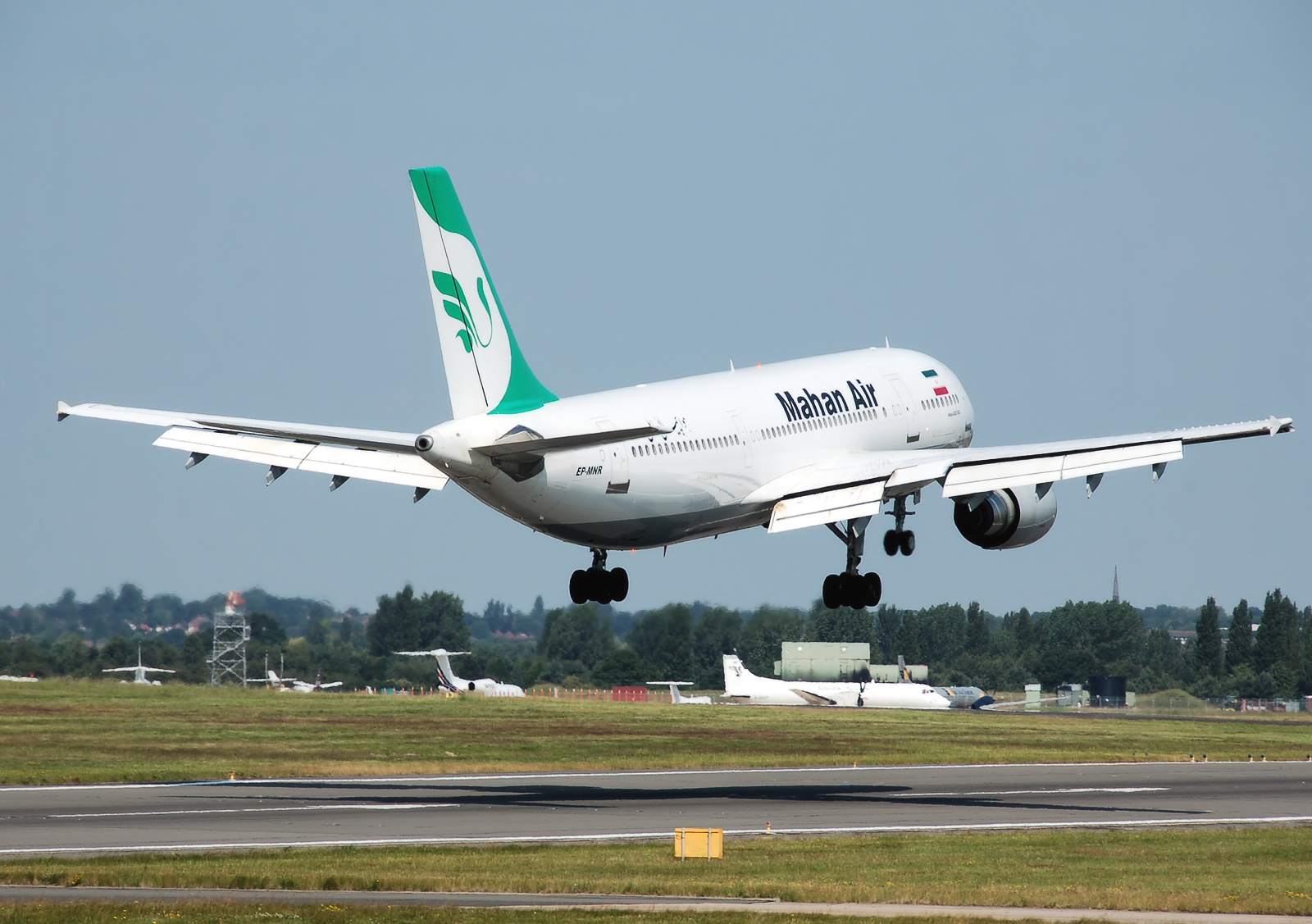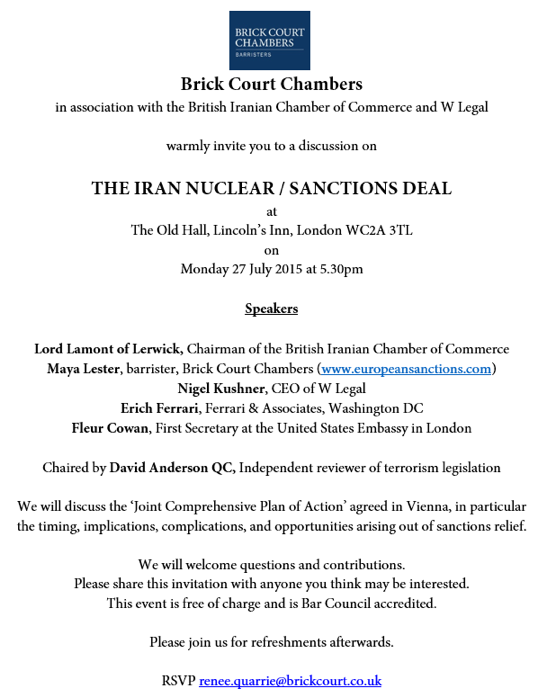Will Boeing and Iran Air Rekindle Their Romance?
October 18, 2015 marked “Adoption Day” for the Joint Comprehensive Plan of Action (“JCPOA”), the day on which the P5+1 and Iran began making necessary arrangements, including legal and administrative preparations, for the implementation of their respective JCPOA commitments. During this process, the U.S. Government will be determining the nature and scope of its own commitments, and on the details of sanctions or restrictive measures to be lifted on “Implementation Day.” Notwithstanding that the respective commitments of the United States are decidedly limited in enabling U.S. persons to otherwise engage in Iran-related business, one arrangement currently being determined by the Office of Foreign Assets Control (“OFAC”) is the commitment to license the export of commercial passenger aircraft and related parts and services to Iran for use in civil aviation. Consequently, Boeing, which is the only large scale U.S. commercial passenger aircraft manufacturer, stands to directly benefit on Implementation Day. Such good fortune has created an opportune time for Boeing to revive its former romance with Iran Air, Iran’s national airline.
Prior to the 1979 Iranian Revolution, Iran Air’s pre-revolution marketing campaign reflected its rapid growth, with slogans like “The World’s Fastest Growing Airline” and “Growing. Your Way.” Since the advent of the Jet age in the sixties, which coincided with Iran Air’s expansion efforts to become a world-class carrier, Iran Air would turn to Boeing for its aircraft needs. In 1979, however, as a result of the growing animosity between their two governments, a rift was created in the Iran Air and Boeing relationship. A prohibition was put on Boeing’s ability to export to Iran, as a result of President Clinton’s issuance of Executive Order (“E.O.”) 12959 on May 6, 1995 and since then, Iran Air has not handled the breakup very well.
As a result of western sanctions against Iran, prohibiting Iran Air from purchasing not only Boeing, but also Airbus and other western made aircraft, the national airline has resorted to drastic means in keeping itself operational. Iran Air became an expert at cannibalizing aircraft and purchasing from the black-market to keep whatever remnants of Boeing aircraft in its possession airborne. It was only in 2014 that Iran Air retired the last operating Boeing 747SP in the world. The 747SP was a modified version of the 747 that had been designed at the joint request of Iran Air and Pan Am in 1973, which at one point was operating the longest non-stop flight in the world between Tehran and New York.
In attempts to maintain its fleet, Iran Air also resorted to Soviet era designed Russian Tupolev aircraft that were involved in several crashes leading Iran’s Civil Aviation Authority to ground the entire Tupolev fleet in February 2011. The airliner also began engaging in dodgy deals to secure typically second-hand Airbus aircraft, which likely became even more difficult after Iran Air’s designation on OFAC’s Specially Designated Nationals and Blocked Persons (“SDN”) list in June 2011, pursuant to E.O. 13382. The designation invokes secondary sanctions concerns, causing non-U.S. persons to be fearful of dealing with Iran Air since it would create a basis for OFAC to target such persons as a retaliatory measure. Nonetheless, history is now turning its page for the Iranian national airline.
Shortly after the P5+1 and Iran came to an interim agreement on November 24, 2013, in line with one of its few commitments in the Joint Plan of Action (“JPOA”), OFAC issued a Statement of Licensing Policy on Activities Related to the Safety of Iran’s Civil Aviation Industry (“SLP”), on January 20, 2014. Until Implementation Day occurs, the Third Amended SLP, issued on August 7, 2015, is the only channel for Boeing to reach out to Iran Air, limited to the export of parts and services related to civilian aircraft. Based on Boeing’s July 2014 quarterly filings with the Securities and Exchange Commission (“SEC”), pursuant to Section 219 of the Iran Threat Reduction and Syria Human Rights Act of 2012, it appears that Boeing has already begun to woo Iran Air.
In those 2014 quarterly filings, Boeing reported that it “…entered into an agreement and engaged in related discussions with Iran Air pursuant to a license from [OFAC],” with the agreement setting forth general terms and conditions with respect to the potential sale of certain goods and services related to the safety of flight. Although this specific license likely remains valid as a result of the JPOA SLP amendments, it has not been disclosed to the public whether Boeing and Iran Air are continuing discussions for the sale of parts and services or to what extent they are willing to transact. Since its initial July 2014 disclosure, only Boeings September 2014 disclosure evidenced the sale of aircraft manuals, drawings, and navigation charts and data to Iran Air, worth $120,000 USD. However, once Implementation Day arrives, Boeing can go the whole nine yards, with the sale of entire commercial aircraft to Iran Air.
Under the JCPOA, the United States has committed itself to allow for the sale of commercial passenger aircraft and related parts and services to Iran by licensing the (i) export, re-export, sale, lease or transfer to Iran of commercial passenger aircraft for exclusively civil aviation end-use, (ii) export, re-export, sale, lease or transfer to Iran of spare parts and components for commercial passenger aircraft, and (iii) provision of associated services, including warranty, maintenance, and repair services and safety-related inspections, for all the foregoing, provided that licensed items and services are used exclusively for commercial passenger aviation. Furthermore, the U.S. has also committed itself to removing Iran Air from the SDN list. It is still unclear whether licensing will be interpreted by OFAC to mean that it will issue a general license for such activities, or create a specific licensing policy that must be applied for in line with such proposed activities. However, it is likely that similar to OFAC’s Third Amended SLP under the JPOA, where similar licensing language was drafted into the agreement, OFAC will issue a similar statement of licensing policy for the JCPOA commitment. As a result, Boeing will probably still have the added impediment of needing to apply for a specific license to OFAC in order to make commercial passenger aircraft sales to Iran Air. And there are still other matters complicating the ability of Boeing and Iran Air from reuniting after Implementation Day.
Unlike the pre-revolution era, there are other suitors already attempting to seduce the Iranian national airline. U.S. commercial aircraft manufacturers, such as Boeing, which dominated the industry prior to the 1979 revolution, now have foreign competitors such as Europe’s Airbus, Canada’s Bombardier, Brazil’s Embraer, and even China’s Comac which recently introduced its C919 regional aircraft. Reports claim that Iranian aviation authorities are already close to securing a deal with Airbus to begin purchasing new aircraft, and since the European Union’s lifting of its current sanctions against Iran is much more comprehensive and immediate, such reports are plausible. In addition, non-U.S. persons will be more at ease in dealing with Iran Air as a result of its removal from OFAC’s SDN list.
Even though Iran Air and Boeing have already begun to work things out, with the way it currently appears the sanction world will unfold after Implementation Day, it is very doubtful the pair can recapture their pre-revolution romance for the foreseeable future. Other suitors can much more readily fulfill Iran Air’s projected need of 100 new aircraft in the next few years. Considerably more second-hand Airbus aircraft has entered the Iranian market since 1979 than Boeing, and according to statements by Iran Air’s CEO, Farhad Parvaresh (although made prior to the JPOA), purchasing Airbus aircraft seems more likely for the airline, and the C919 a viable alternative. With Iran Air now on the world market, the questions remains whether Boeing will commit to winning Iran Air back all to itself.


